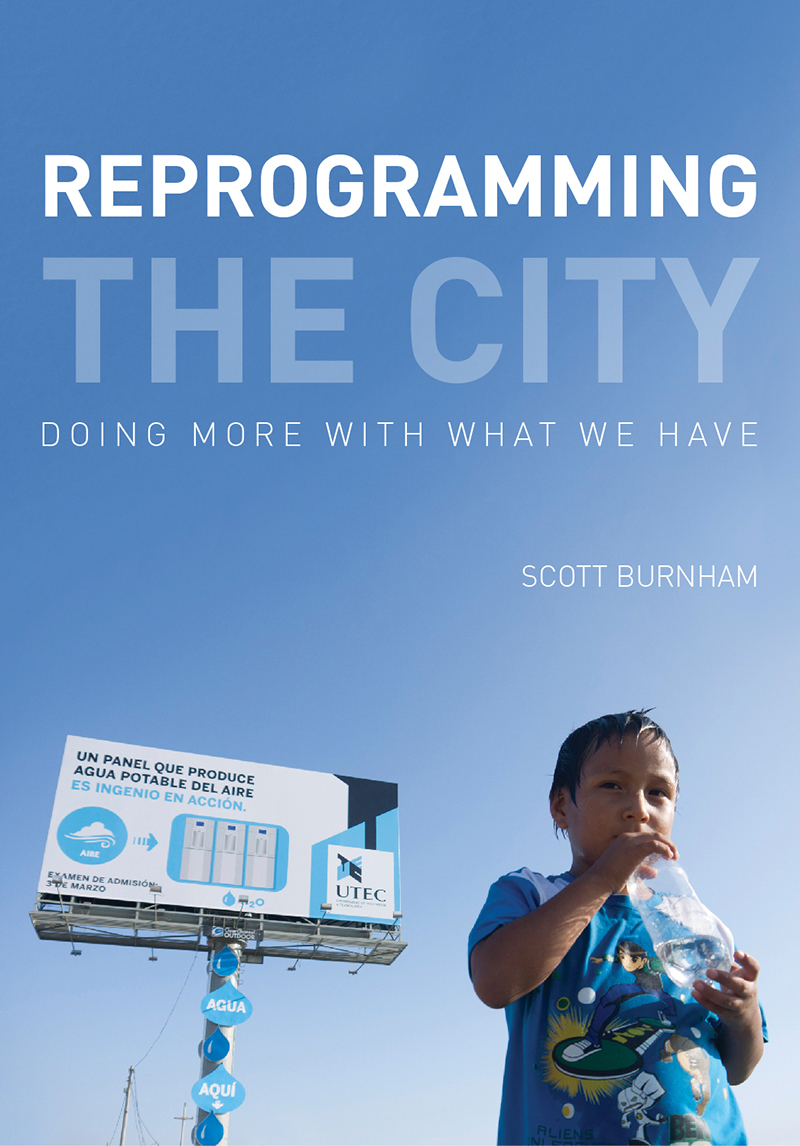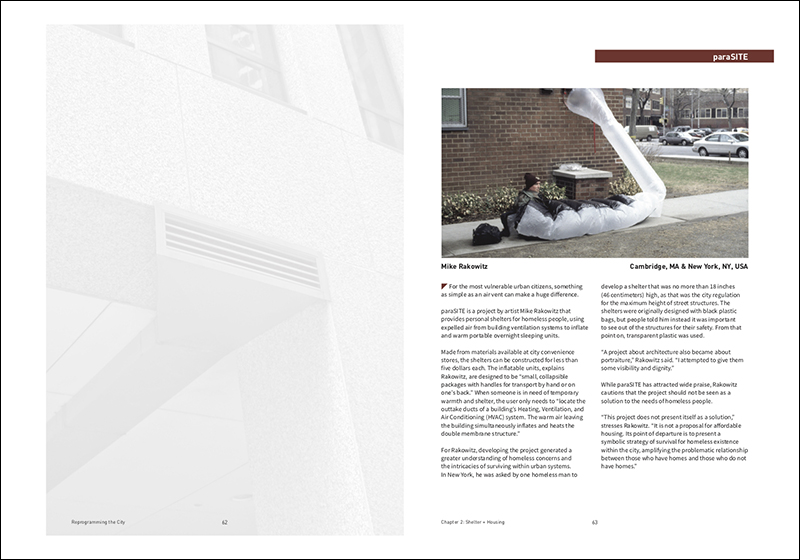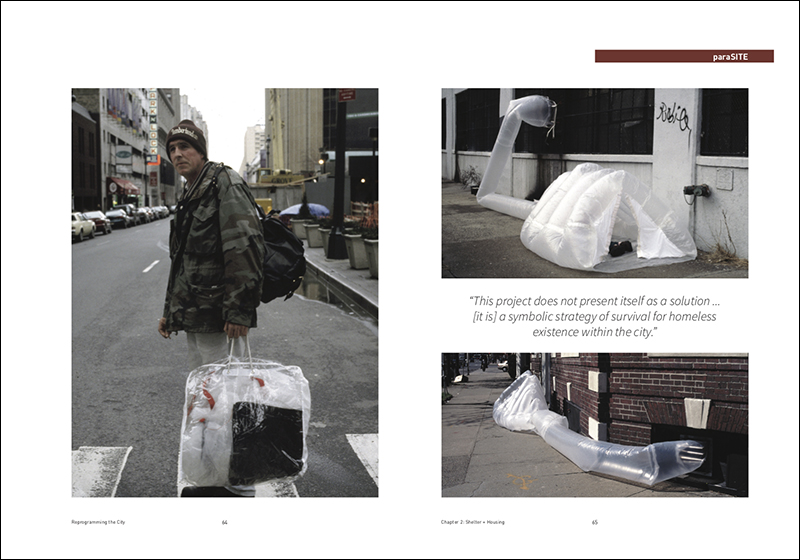Reprogramming the City
Reprogramming the City: Doing More with What We Have
Scott Burnham
VRMNTR, 2018

Paperback | 7 x 10 inches | 214 pages | 377 illustrations | English | ISBN: 978-1945971013 | $19.95
Publisher Description:





Author Bio:
(Note: Books bought via these links send a few cents to this blog, keeping it afloat.)




Scott Burnham
VRMNTR, 2018

Paperback | 7 x 10 inches | 214 pages | 377 illustrations | English | ISBN: 978-1945971013 | $19.95
Publisher Description:
Reprogramming the City is a 214-page collection of over 40 examples of adaptive reuse in an urban context from 17 countries showing innovative ways existing urban infrastructure and other elements are being reused and repurposed for new use in cities around the world. From billboards in Lima, Peru, that now generate fresh drinking water to bus stops in northern Sweden transformed to boost the mental health of commuters during dark winter months, Reprogramming the City reveals the untapped potential of adaptive reuse and repurposing urban objects for new use to improve life for urban residents.dDAB Commentary:
Organized into the thematic chapters of Food and Water, Housing and Shelter, Health and Wellbeing, Energy and Ecology and Renewal and Recovery, this book shows how the full range of human needs can be realized from the assets cities already have in place through adaptive reuse and repurposing.
With all the hype over Big Data in recent years, particularly how it will infiltrate (has infiltrated?) cities to make them better places to live, it seems logical that the inclusion of "reprogramming" in this book's title would align it with such techno-utopian dreams. But the 44 examples of adaptive reuse that Scott Burnham presents are physical solutions rather than purely digital ones (there are some solutions that incorporate computer programming though). More specifically, Burnham focuses on how designers are adapting obsolete infrastructure — what he calls in a more business-like parlance "existing urban assets" — with new uses that respond to contemporary life. The solutions he has assembled aim to make life better for people living in cities, often for those typically overlooked by designers and bureaucrats, while also bypassing the demolition of obsolete or abandoned buildings and infrastructure. These are socially minded designs rooted in sustainability.Spreads:
The 44 projects are gathered into five color-coded, paired-word chapters: Food + Water, Housing + Shelter, Health + Wellbeing, Energy + Ecology, and Renewal + Recovery. Although the architect in me was drawn to the second chapter, Housing + Shelter, some of the most creative designs are found elsewhere. There's the water billboard that graces the cover, in which clean water is drawn from the humid air over Lima, Peru, and made available to anybody turning on the faucet at its base. Also in the Food + Water category is the Borneo Project, which turns fire hydrants into drinking fountains when not in use (most of the time, that is) by firefighters. These projects and the two examples shown below (Michael Rakowitz's paraSITE from the Housing + Shelter chapter and Edge Design Institute's The Cascade from the Health + Wellbeing chapter) are built, but the book also has speculative designs not yet implemented. I always prefer built examples, yet given the fact the built designs tend to be demonstration projects, artworks, one-off installations, or even exercises in corporate branding (e.g., JetBlue's small rooftop farm at JFK), it's safe to assume the designs are not widespread and cities still need work. And that's where Burnham's book comes in; it's an argument for using existing resources in creative ways, not a catalog of solutions to be implemented. As such, the book is ideal for city leaders unsure of what to do with outdated infrastructure, as well as for designers interested in the idea of "reprogramming" cities and in need of inspiration.





Author Bio:
Scott Burnham is an author, keynote speaker, and strategist specializing in resourceful solutions for sustainable cities and helping people be more resourceful in their lives and communities.Purchase Links:
(Note: Books bought via these links send a few cents to this blog, keeping it afloat.)



